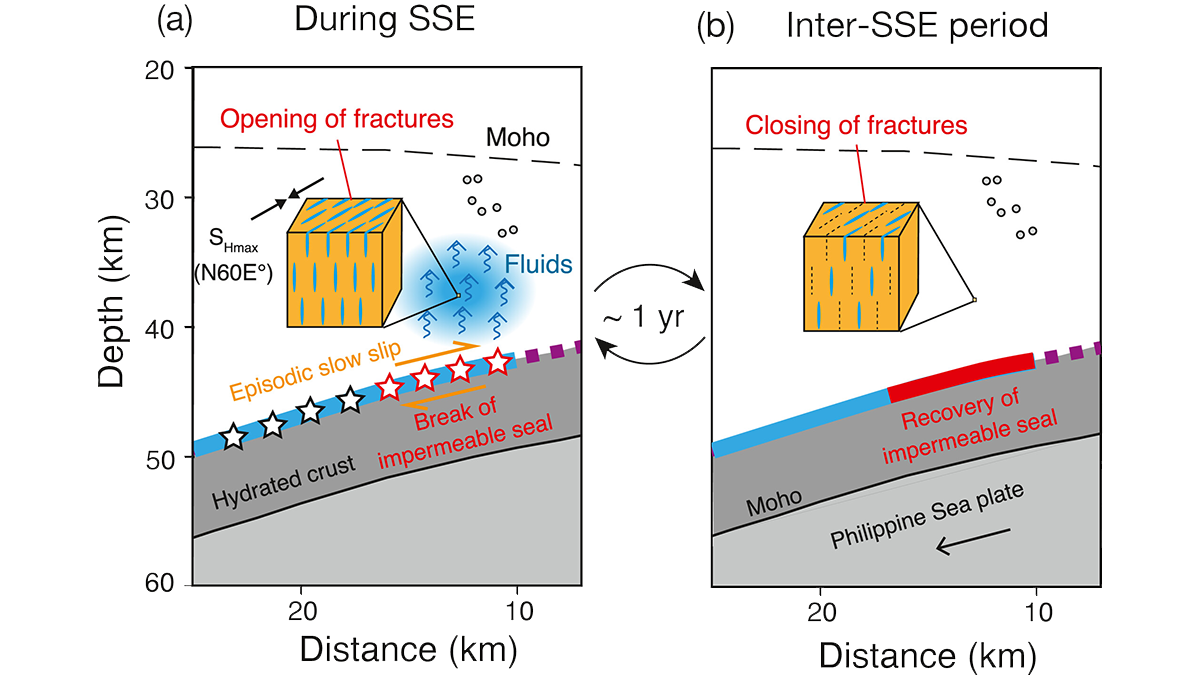Editors’ Highlights are summaries of recent papers by AGU’s journal editors.
Source: Journal of Geophysical Research: Solid Earth
Changes in the motions of large tectonic plates can hinge on small-scale processes hidden deep beneath the surface, but often only larger scale resolution can be obtained with geophysical data recorded near the surface. Ito and Nakajima [2024] present an exciting example of inferring detailed cyclical changes at depth on the subduction zone plate interface using seismic anisotropy measurements.
Directional dependence of seismic wave speed, referred to as anisotropy, characterizes fine scale properties, such as the preferential organization of minerals or fractures, within a large composite material. Temporal variations of seismic anisotropy that can be spatially linked to just above the subduction interface near Kanto, Japan were found to be synchronized with subduction zone slow-slip events that occur on approximately yearly time scales. These slow slip events release some accumulated strain on the subduction interface over days to weeks, in contrast to earthquake slip that is orders of magnitude faster.
The study explains how increased anisotropy during the slow-slip events is consistent with transiently increased density of organized fractures enabling the pulsed ascent of fluids released by the subducting slab. More than a decade of high-quality data allowed the authors to find this subtle but systematically important cycle signal among the rich variety of ground shaking processes that fill seismograms in dynamic plate boundary settings.
Citation: Ito, Y., & Nakajima, J. (2024). Temporal variations in frequency-dependent shear-wave anisotropy above a plate interface following episodic slow-slip events. Journal of Geophysical Research: Solid Earth, 129, e2023JB028526. https://doi.org/10.1029/2023JB028526
—Brandon Schmandt, Associate Editor, JGR: Solid Earth

